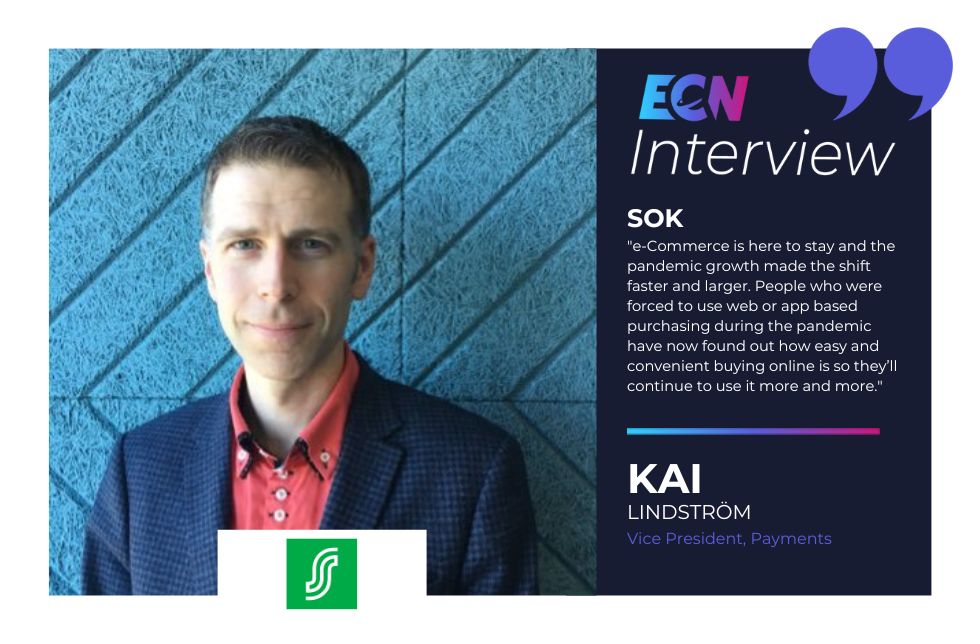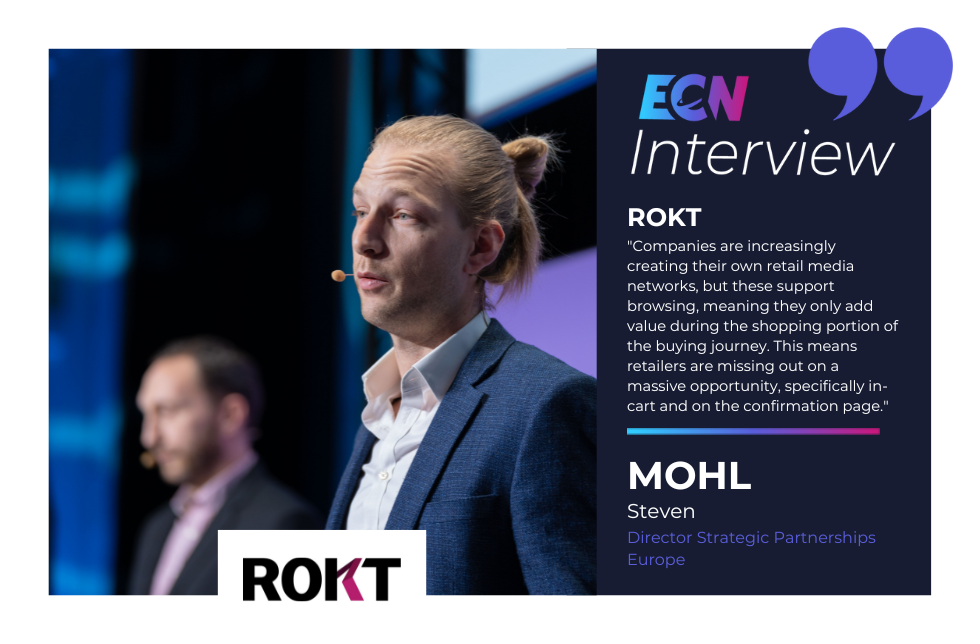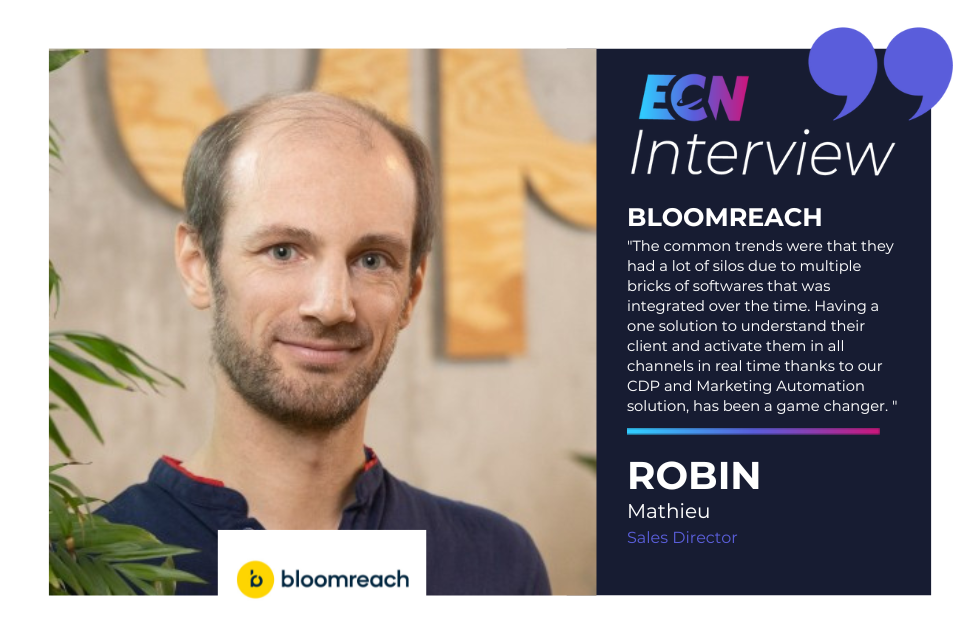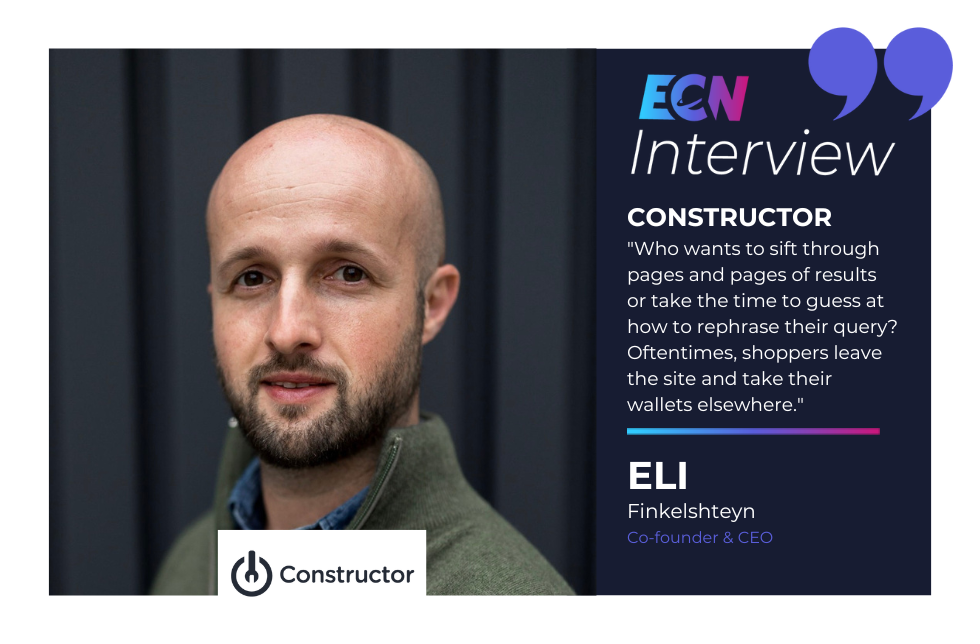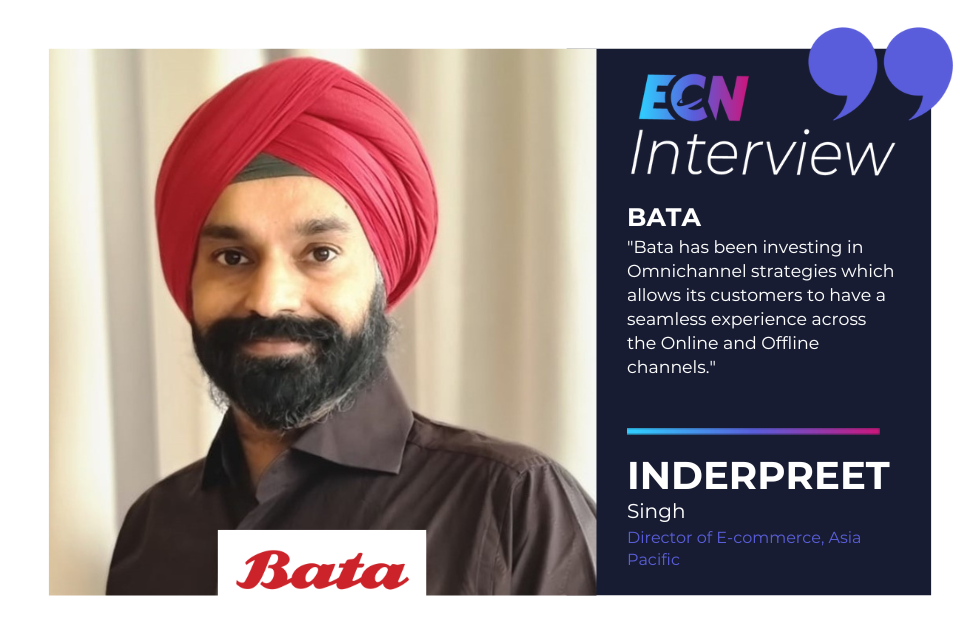In partnership with Merchant Payments Ecosystem 2022, E-Commerce Nation had the pleasure to interview Kai Lindstrom, Vice President Payments at SOK. In this interview, you will find advice on strategies for online sales and future payment trends.
Can you introduce yourself and your background?
I’m Kai Lindström, VP of Payments at SOK, Finland.
I’ve been working with payments since 2004, first with issuing, but then from 2007 onwards, mostly with the merchant service side of things. In my “previous lives” I’ve been Head of Acquiring for OP Financial Group (Finland’s largest financial group), Head of Payments for Neste (oil company) and the Head of Sales and Country Manager for Swedbank Pay (Nordic’s largest acquirer).
Can you introduce your company and its activities?
SOK is a group-guiding entity of S Group, which is Finland’s largest retail group. We operate also in Estonia.
S Group is a co-operative group and its main business areas are grocery and supermarket trade, hotels & restaurants, traffic (fuel & ev charging), department stores and speciality shops and hardware trade (DIY stores). In addition to this, we’ve got car dealerships, flower shops, barbershops, an own bank (large Visa issuer in Finland) and even some funeral offices!
We are talking to each other in the context of the MPE. Is this your first participation? What is the added value you are looking to find at MPE?
No, I’ve been to MPE for six or seven times and spoken twice on the stage so the MPE is very familiar to me. As always, I’ll be looking for new ideas, innovations in the payments space and of course new potential business partners.
Why would you recommend payment professionals to attend MPE 2022?
Yes, definitely – it’s the place to be if you’re into payments. And it’s not just Europe, we’ve seen many visitors from the American continents and APAC to participate the event during the past years.
What topics are in the MPE 2022 agenda close to your heart?
Payment acceptance and payment orchestration incl. omnichannel enablement are the most interesting to me this year.
What is your “go for” strategy to bridge physical and digital payments?
Currently we don’t have support for omnichannel but as we’re having a bid process ongoing for the payment services for the group, we’re looking for a partner/partners who are able to provide us support in omni environment. We’ve been pondering over choosing an omni capable PSP or building a payment orchestration solution with two different PSPs under it. Currently it seems that we’re going to go with a single PSP setup and thus avoiding extra complexity and cost.
What are the issues and challenges you must face with e-commerce payments?
We have several different kinds of e-com stores that have different requirements and limitations to payment methods. For example grocery orders cannot be charged at the time of the order as there can be products that need to be weighed and priced based on the weight at the time of collection. Therefore certain payment methods just cannot be offered which might cause confusion amongst the consumers.
At least in the Finnish market, some of the banks operating here have not done a very good job when it comes to SCA. This means that in our mobile apps, some of the payments fail because of faulty SCA processes by the banks. This is a clear and unfortunate issue what we ourselves cannot fix but we’ve tried to circumvent it by introducing Apple Pay payment option to bypass the SCA process altogether.
What solutions have helped you to deploy your payment strategies?
Well, we’re in a midst of a change process, so maybe I’ll answer to that question after we’ve chosen our new partners…
What do you think about the BNPL and its future?
It’s a great option for the consumers, especially as long as the regulation is pretty much non-existent, thus giving the BNPL an upper hand compared to card payments when it comes to the user friendliness. However, the risk of fraudulent transactions is there as well as the thought that do you really want to help your customers to consume more than then can afford? That’s especially important with groups like ours which is owned by its customers.
How do you foresee the e-Commerce Growth? Is it a Bubble that will Burst in due course?
e-Commerce is here to stay and the pandemic growth made the shift faster and larger. People who were forced to use web or app based purchasing during the pandemic have now found out how easy and convenient buying online is so they’ll continue to use it more and more.
That said, there are also indications that people like to come back to the hypermarkets and shopping malls to spend time, do some shopping and visit cafés and restaurants with family & friends. So at least I hope that there’s going to be some level of resurgence of brick-n-mortar…
What shopping trends & habits emerged over the last two years and are here to stay?
At least ordering groceries online and either picking them up or ordering them directly to home turned out very popular and continues to be so even after the pandemic.
Has your company invested in a digital-first shopping experience that’s seamless, efficient, convenient, and personalized?
There’s a lot of effort put into developing the e-com & mobile shopping to be better but it’s going to take several years to be really sophisticated and seamless.
How did you expand your payment options to meet customer preferences for digital payments, both contactless in-store and flexible choices online?
Our in-store contactless capabilities were on an excellent level already when the pandemic started so there were no worries about those. In the online channels our capabilities regarding the payment methods were on a good level but we for example added Apple Pay to our mobile fueling application to make it easier for the customer when they are able to skip the 3DS SCA process altogether.
What do you foresee as trends shaping the post-pandemic world in 2022?
E-commerce, especially when used via mobile devices, is continuing its giant leap forward as people who got used to purchase online during the pandemic, are continuing to do so even when the brick-n-mortar stores are open again.
BNPL has become one of the fastest-growing retail and payment trends in 2022. Is BNPL Bubble going to burst?
- Will there be strict regulation with mandatory SCA
- If the fraud levels (esp. identity fraud) increase and customers lose their faith in the safety of the payment method
That said, I think BNPL is here to stay and offers convenient way to buy for many, and especially to younger generations of consumers.
Many countries are actively looking at passing the regulation at BNPL: What impact do you think It may have?
If the user experience – which for now is superior to regulated card payments – is going to suffer, making it more cumbersome to do the payment, then I think the popularity of the payment method might decrease. On the other hand, having to do a SCA might increase the trustworthiness of the BNPL amongst more wary consumers.
What facts are essential for merchants when selecting their BNPL payment provider?
Features of the service, excellent UI design and capability to integrate easily to the web shop platform. Of course also pricing towards the merchant but also the price levels for the consumers (you don’t want to rip off your customers if they cannot pay in full within the initial payment period).
How does BNPL drives additional value for merchants in the segments/ Markets you operate?
Nobody in their right mind buys food or fuel with BNPL but when shopping for a new washing machine or a bike, to be able to do it with BNPL is a big bonus for the consumer. Being able to divide, say, 1000€ in four instalments, is quite nice compared to having to have it immediately or having just 30 days of payment period. So the BNPL payment option will increase the sales as people who wouldn’t do the purchase otherwise, will also buy items/services and the payment method could increase the average transaction values as well.
How do you see the next evolvements in BNPL?
There could be more control for the consumers, meaning more visibility and flexibility to manage their debts.
Most probably there will be more regulation, perhaps also by merchants. This could mean that the merchant could check before accepting the BNPL payment if and how much the prospective customer has outstanding debt and if she has any overdue payments. If there is misusage reported, the merchant could suspend the BNPL payment option. However, there’s quite a pressure to do so as the merchant would like to get the deal done.
Valuations in the open banking space are soaring far beyond revenues. What are investors betting on?
I assume they’re expecting a widespread take-on by merchants if/when the merchant service charges are clearly lower than with debit & credit cards. So the wish is that Open Banking would replace card usage and of course the investors hope that this shift would be considerable. Perhaps some price-leader merchants would even optimize and incentivize the usage of Open Banking instead of cards to push down the costs.
Open Banking Uptake: What needs to be done to improve the customer experience and take up?
In online environment the UX is pretty good already but if banks and merchants wish to expand the usage to instore, a convenient payment process is needed. Using Request-to-Pay could be one of the possibilities for this.
How will we get consumers to feel secure and safe?
As Open Banking won’t probably ever have chargeback features like many of the payments cards do, I think the usage will be mostly limited to domestic purchases. Even so, a SCA is needed to prevent misusage and there could be even a ‘reverse SCA’ where the merchant tells the customer that “I’m really who I claim to be”.
Register to the event with our code MPE22-ecomm-nation-10

